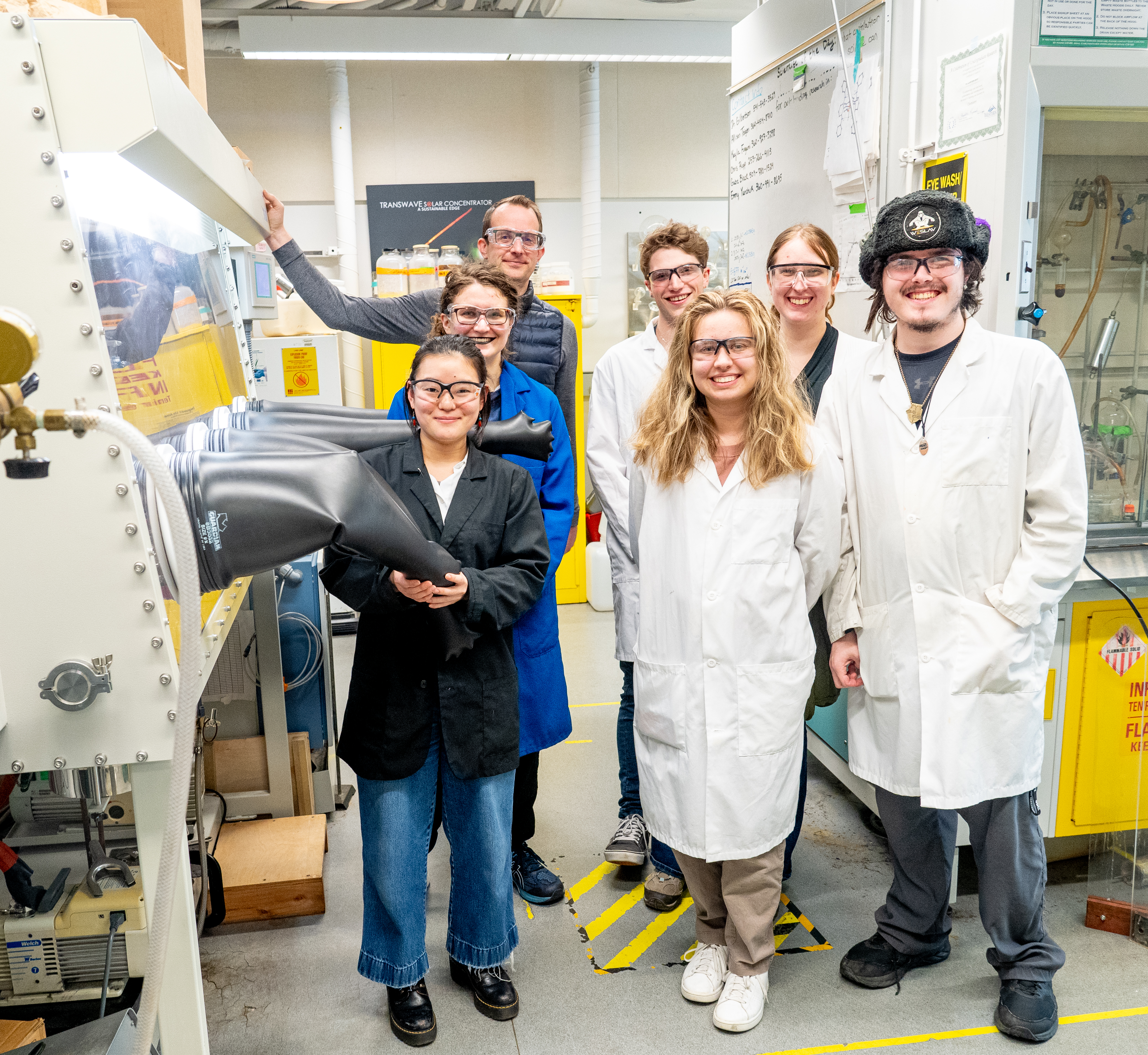$70,000 American Chemical Society Grant Opens Up Student Research Opportunities

Christopher Rupp (far right) and other student researchers (from left to right: Kayla Fugami, April Trausch, Gabe Black, Emmy Yanchuk, Allison Teigan) within John Gilbertson's (back left) lab.
A $70,000 grant from the American Chemical Society titled “Electrochemical Redox-Switching of Molecular Catalysts for the Deoxygenation of Pervasive Environmental Pollutants” is opening up new opportunities for student research within the chemistry department.
Professor John Gilbertson will use the grant to fund two undergraduate student researchers during the summer for the next three years. Student researchers will have the opportunity to work in Gilbertson’s lab throughout the school year for course credit in addition to their summer work.
The student researchers will investigate how electrochemistry can be used in carbon dioxide reduction in place of the typical chemical reduction processes. Using electricity to transform carbon dioxide to carbon monoxide may offer a more environmentally-friendly and sustainable way to reduce carbon dioxide emissions, allowing the potential to utilize electricity from sunlight in carbon reduction.
Gilbertson described this study as “fundamental” because the researchers will study these reactions on a molecular scale.
“We’re doing this in a lab, in our reaction vessels,” he said. “We are asking, ‘How would you be able to design a molecule to do this?’”
Junior Christopher Rupp partnered with Gilbertson on securing the grant and plans to work within Gilbertson’s lab for the next two years. Rupp’s work in Gilbertson’s lab is his first experience in a research lab setting.
“I’m really interested in [Gilbertson’s] overall research. His use of bio-inspired complexes to reduce these environmental pollutants, and be environmentally friendly, and create these futuristic solutions – I have always been really interested in that, and I really respected that work,” Rupp said.
Research in a lab setting like this can open opportunities for students in their careers, Gilbertson said. The length of the grant allows students to work on the project for more than one year. This allows them to gather quality data and results that could be published in academic journals or presented at conferences. Research experience is also a boost when applying to graduate schools or jobs, Gilbertson said.
“It’s the education piece we’re really interested in here,” Gilbertson said. “We’re trying to educate students to become researchers, think like researchers, and think like scientists. A grant like this provides really positive outcomes for both future projects and for the students.”
Gilbertson recently published a paper in the American Chemistry Society journal “Inorganic Chemistry” with another team of undergraduate students, which was one of the top-ten most read research papers in the journal last year.
Working in Gilbertson’s lab means Rupp is able to gain practical experience with instrumentation and applied techniques he previously only saw on paper, he said.
“I know a lot of the organic reactions that I learned about in [organic chemistry] seemed so easy to write down on paper, and I’m learning, ‘Oh, wow, this has sixty different moving parts and it’s actually really, really hard to do,’” he said.
Rupp plans to enter a master’s program when he graduates, and he believes his work within Gilbertson’s lab will be an asset for him to meet his future education and career goals.
Students who are interested in working within the Gilbertson Lab should contact John Gilbertson at john.gilbertson@wwu.edu. To learn more about the work being done in Gilbertson’s lab, visit his lab page.